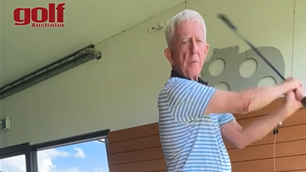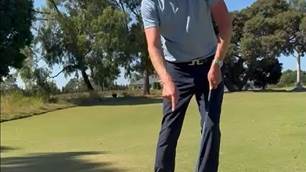This collection of drills from Adrian Fryer will rid this frustrating tendency from your game for good.
 Snookered drill: Appreciating that breaking putts have a different entry point to straight putts gives you more chance of holing out.
Snookered drill: Appreciating that breaking putts have a different entry point to straight putts gives you more chance of holing out.Adopt a 'no fear' approach
Most amateurs get over-embroiled in technique on short putts and end up giving up and decelerating. But if you are conceded a putt or just leant over to tap one in, you’d instantly be more positive. You need to capture that same tempo when faced with short putts that carry a consequence. If you spend a long time thinking about it, that’s when you tend to decelerate.
Play snooker to understand the entry point
Short putts that have enough break on them to require you to aim outside the hole are tricky, because the pace has an influence on the amount the ball will break. My advice to you would be to hit the putts positively.
Remember that on breaking putts, the entry point changes, rotating around the hole left or right. Trying to die breaking putts into the front of the hole will often mean you’ll miss on the low side. As a drill, place a ball in front of the hole where the ball will funnel in from. Then, play a game of snooker, trying to knock that ball in. This drill allows you to appreciate how the angle the ball rolls in on changes and also helps ensure you strike your putts with enough pace and apply a positive stroke.

Short putts tap in the drawing pin
You need to focus on impact rather than what the stroke is doing. Your objective is to putt the ball in the hole, not to study whether the putter is going back square or too far inside, etc. Striking the back of the ball squarely is the key. As a mental tip, imagine there’s a drawing pin stuck in the ball on its equator; your job at impact is to push it further into the ball with your clubface. This requires a square clubface and a level blow, both of which will increase the likelihood of holing out.
Related Articles

Video Lesson: Hear the swoosh past the ball

Playing From The Tips Ep.106: Texas Open, LIV Miami & LPGA Match Play












